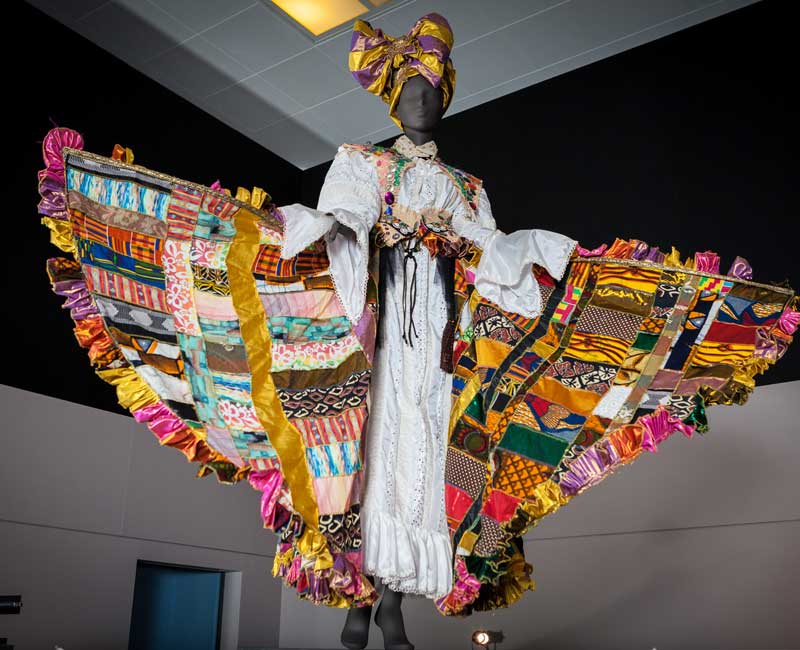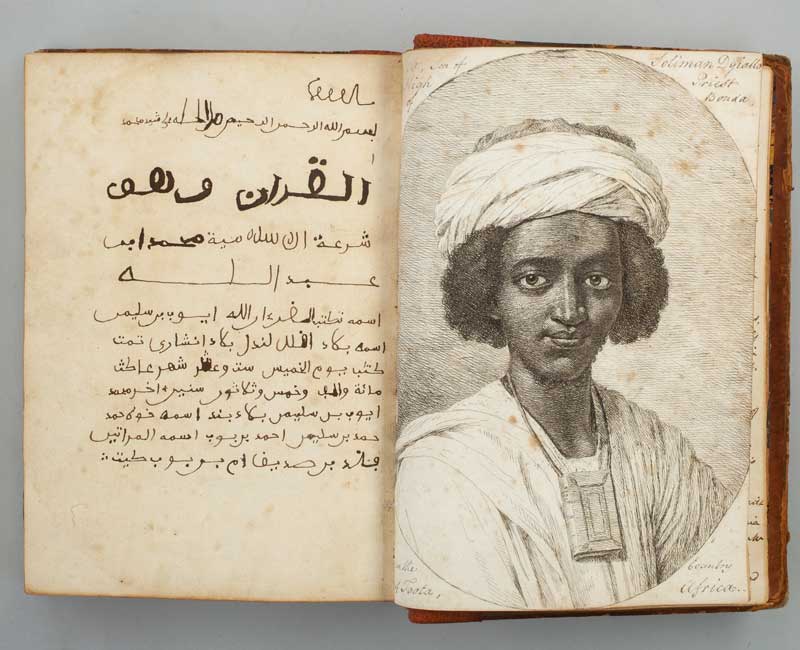“Word, Symbol, Song – The British Library’s first major exhibition of it’s African collections opens today; with a focus on West Africa’s vibrant literary heritage this blockbuster exhibition spans over 1, 000 years of the continent’s history and culture. There’s much to see, and here at What’s On Africa, we asked the British Library’s team for a top ten of objects to check out – if you can’t see anything else, make sure you take in these fantastic pieces of Africa’s literary and symbolic heritage.
1 – Fela Kuti
Where else to start but with arguably the most influential and recognisable cultural and political figure in 20th Century Africa. Fela Anikulapo Kuti (1935–97) one of Africa’s best-known and most influential musicians? Flamboyant, maverick and heavily influenced by the Black Power movement, he was radical in his music and politics. He invented a new musical style, Afrobeat, and sang in Pidgin to communicate widely his revolutionary ideas. Fela’s influence on the culture, music and literature of West Africa and the world continues to be felt; most notably in the symbolism of the new musical forms coming out of Nigeria, and even the lyrics of contemporary songs. A vocal critic of Nigeria’s military governments of the 1970s and 1980s, who was beaten and imprisoned for his trouble, Fela was also a Pan-Africanist, a polygamist and a practitioner of Yoruba religion. The writer Wole Soyinka, his cousin, called him the ‘scourge of corrupt power, mimic culture and militarism’. The exhibition will feature extracts from the 2014 film Finding Fela by Alex Gibney and includes the song ‘V.I.P.’, by which Fela meant ‘Vagabonds in power’.
2 – Saddlebag Qu’ran
The saddlebag Qur’an is typical in style of a wide area centred on the city-states of Hausaland and the Bornu Empire (today, northern Nigeria, southern Niger and Chad). It was one of West Africa’s many centres of manuscript production. The manuscript is loose-leaf and kept in a leather bag. This allowed individual pages to be read while travelling, or to be lent out and learned by heart. It is divided into four by the large illuminations. Qur’ans from Bornu were especially sought-after and were exported to North Africa and the Middle East.
Carnival costume designed by Ray Mahabir of Sunshine International Arts in 2015 – Photographed by Toby Keane
3 – Ray Mahabir Carnival Costume
This fabulous costume is by Brixton-based designer Ray Mahabir of Sunshine International Arts. It is based on the tradition of Bele or Bel Air, a drum dance and song closely linked to Caribbean history, struggle, freedom and celebration. Bele was performed in the carnivals, which began in the late 18th century, most famously in Trinidad. Enslaved workers created their own versions of the balls hosted by plantation owners, and infused them with African traditions including masquerade. The Bele form has origins in the French-speaking Caribbean, and may also be connected with Bele in central Senegal. Women were the most important performers in Bele, choreographing dances and writing (often political) songs. The tri-panelled skirt of the costume blends African, Caribbean and European textiles, reflecting the coming together of cultures. The rich adornment of beads and jewels captures the celebratory atmosphere of the modern carnival.
4 – Akonting
The akonting is an instrument of the Jola people from The Gambia. It has striking similarities to the American banjo in construction and playing style. This akonting was handmade for this exhibition by Daniel Laemouahuma Jatta in May 2015 at the Akonting Centre, Mandinary Village, in The Gambia. Although the instrument has a long history, it is part of a living tradition, with instrument-makers still crafting the instrument to the present day.
5 – Sayings on vehicles, taken from Michael Katakis photograph
In everyday life, people in West Africa use a wide range of creative techniques to talk about the world as it is, and as it should be. They use symbols and signs shown on cloth, vehicles and other media to express their identity, praise and celebrate people and occasions, and pass on educational and political messages. Proverbs, stories, songs, pamphlets and other forms of oral and written literature also allow people – whether performers such as griots or rappers, or ordinary women and men – to praise, parody, describe, criticise or influence individuals and society.
6 – Decorated sheet brass box
The sheet-brass box, or forowa, is a rare rectangular version of a container most often used for shea butter, and sometimes for valuables including gold dust. In this instance, the box is uniquely designed as a wheeled trolley. The box is richly decorated with symbolic designs, including a sankofa bird, referencing the importance of history. It also shows a stool, a symbol of kingship, and a spider, probably a representation of Ananse, the trickster character of West African and Caribbean stories. The lid shows two crocodiles with one stomach – a common motif indicating competition or interdependence.
7 – Gold weights
Gold-weights were an important form of sculpture in the Asante kingdom. Made of brass, they were used for weighing gold dust. Most men possessed their own set of scales and gold-weights. These tiny sculptures are charged with symbolic meaning. One of the weights, a stool and a pair of sandals are symbols of kingship. The Golden Stool represents the Asante monarchy and nation, and a king’s sandals are part of the royal regalia. Another, the Sankofa bird indicates the importance of history and of learning from the past: ‘reach back and get it’ in one related saying.
A qu’ran written by Ayuba Suleiman Diallo featuring his portrait, 1734, on display in West Africa: Word, Symbol, Song and from the collection of Mr Rami El Nimer
8 – A qu’ran written by Ayuba Suleiman Diallo
Ayuba Suleiman Diallo (c. 1702–?73), was a high-status Muslim cleric freed from enslavement in Maryland, North America, and who travelled to England in 1733. In Britain, his gracious personality and learning made him something of a celebrity. One of three Qur’ans written Diallo during his stay in London is on display. All were written from memory.
9 – Wole Soyinka annotated typescript
Part of a larger section on modern West African literature, the typescript of Soyinka’s long poem Idanre was commissioned for the 1965 Commonwealth Arts Festival, and published in a revised form in Soyinka’s Idanre and other poems (1967). The poem deals with Ogun, the Yoruba god of war, iron, the hunt and the road and the patron saint of blacksmiths. Ogun is able to link the worlds of the dead, the living and the unborn. Soyinka has made drawings on some of the pages, including this one. Elsewhere he has written instructions for music to accompany the poem’s performance.
10 – Early engraving of Timbuktu
This is an early engraving of Timbuktu, the city located in the Mali empire, which developed as a centre of scholarship in the reign of Mansa (King) Musa (ruled 1307–?32), a descendant of Sunjata. In 1324, Mansa Musa made a pilgrimage to Mecca, displaying his vast wealth in gold and bringing back Muslim scholars and architects. This image was published by René Caillié, the first European to reach the city (in 1828) and return alive. Timbuktu was one of West Africa’s most important cultural centres in the medieval and early modern periods.



